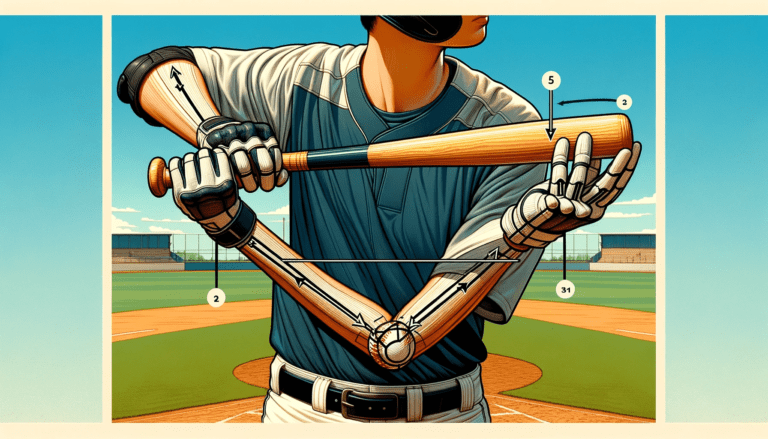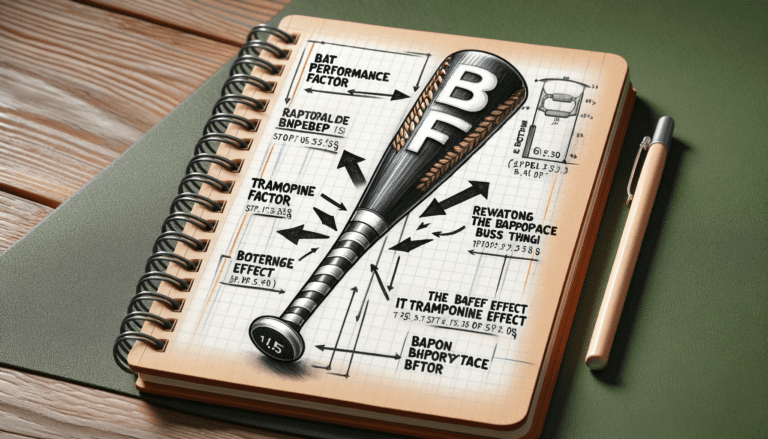Can You Wear Metal Cleats in High School Baseball?
Are you wondering if you can wear metal baseball cleats while playing high school baseball? The short answer is yes, you can wear metal cleats in high school baseball games and practices, but with some important rules to keep in mind.
High school baseball players face a lot of challenges, from improving their game to following the rules.
One common question is about the type and style of cleats allowed. While metal cleats are allowed in high school baseball, not all leagues and schools have the same rules.
It’s important to check the specific regulations of your league or school before going to the field with metal cleats. This way, you can play your best game without any worries about your gear.
Key Takeaways
- Metal cleats are prohibited in divisions 12U and younger, but allowed in divisions 13U and older, ensuring player safety and field integrity.
- Cleat choices must adapt to field surfaces; metal cleats are not permitted on turf fields or temporary mounds, highlighting the need for alternative footwear.
- Compliance with high school baseball rules, such as those listed on PlayNCS.com, including pitching regulations and bat restrictions, is mandatory for fair play.
- Preparation for tournaments requires adherence to equipment standards and schedule request deadlines, ensuring smooth participation and competitive fairness.
- Recognition through awards, such as championship banners and NCS rings, celebrates team and individual achievements, fostering a culture of excellence in high school baseball.
Understanding the Equipment Rules for High School Baseball

Age-Specific Regulations for Metal Cleats
In high school baseball, the use of metal cleats is subject to age-specific regulations to ensure player safety and field maintenance.
Metal cleats are prohibited for players in divisions 12U and younger. This rule helps to prevent injuries that can occur from the use of metal spikes among younger athletes who are still developing their skills and coordination.
For players in divisions 13U and older, metal spikes are allowed. This transition reflects the increased skill level and the need for better traction on the field as players grow stronger and faster.
Coaches, players, and parents need to be aware of these regulations to avoid any penalties or safety issues during games and tournaments.
Here’s a quick summary of the cleat regulations by age division:
- 12U and younger: No metal cleats allowed
- 13U and older: Metal cleats permitted
Adherence to these rules is crucial for compliance with high school baseball standards and for the safety of all participants.
Protective Gear Requirements for Catchers
Ensuring the safety of catchers is paramount in high school baseball. All catchers must wear complete protective gear, which includes a helmet with a facemask, a throat guard, a chest protector, and shin/leg guards. Additionally, an athletic supporter is required for all catchers.
The gear must meet specific safety standards to provide adequate protection. It’s important to note that for divisions 12U and younger, the catcher’s helmet must fully cover both ears.
This is not only a safety measure but also a compliance issue with the rules of the game.
When selecting a catcher’s gear, it’s essential to consider both protection and performance. The right fit is crucial for mobility and comfort during play.
For a comprehensive understanding of what catchers need for the upcoming season and guidance on sizing, refer to resources like “Choosing & Sizing Catcher’s Gear—A Complete Guide”.
Baseball and Bat Standards Across Divisions
High school baseball divisions have specific standards for bats to ensure fair play and safety.
All bats must have a branding, label, or stamp proving BPF 1.15, which is a measure of the bat’s performance factor. Additionally, USABat, BBCOR, and Wood bats are permissible across various age divisions.
The length/weight ratio of bats can vary depending on the division, with certain restrictions in place for each category.
For instance, 13U Major & Open divisions may use bats with a -5 or -3 length/weight ratio, while 13U AAA/AA divisions are restricted to -8 or -5.
Players and coaches must check the specific event home page for any bat type restrictions, as some events may have stricter rules.
For wood bats, they must be composed of a single piece of wood. Metal/Composite bats are also widely used, but it’s important to note that the 14U Open & Major divisions require a -3 BBCOR stamped bat.
Compliance with these standards is not only a matter of following the rules but also affects the integrity of the game and player safety.
Read Also: Can You Wear Baseball Cleats for Lacrosse
The Impact of Field Surfaces on Cleat Choices

Restrictions on Metal Cleats for Turf Fields
When it comes to playing on turf fields, the type of cleats worn by players is a critical consideration.
Metal cleats are prohibited on turf fields to prevent damage to the playing surface and to reduce the risk of injury to players.
This restriction is particularly important for high school baseball, where the safety and maintenance of the fields are top priorities.
The following points outline the key restrictions and alternatives:
- Metal cleats are not allowed on any turf fields or temporary mounds.
- Players must opt for plastic, rubber, or other non-metal alternatives when playing on these surfaces.
- For divisions 13U and older, metal spikes may be worn, but only on natural grass fields.
Adherence to these guidelines ensures that the integrity of the turf is maintained and that all players have a safe playing environment.
Players and coaches need to be aware of the surface type before selecting appropriate footwear for games and practices.
Adapting to Temporary Mounds
When playing on fields with temporary mounds, players must adapt their equipment and approach accordingly.
Temporary mounds often have different textures and stability compared to permanent dirt mounds, which can affect a player’s footing and pitching technique.
To ensure safety and compliance with regulations, players should consider the following:
- Inspect the mound before the game to identify any potential issues.
- Use cleats that are appropriate for the mound’s surface. For instance, some leagues, such as those following Texas Baseball Rules, explicitly prohibit steel spikes on portable mounds.
- Adjust pitching mechanics if necessary to accommodate the mound’s condition.
Remember, adhering to equipment rules is not only about following the letter of the law but also about ensuring player safety and maintaining a level playing field for all competitors.
Alternatives to Metal Cleats for Younger Divisions
For players in divisions 12U and younger, where metal cleats are not permitted, a variety of alternatives are available to ensure both safety and performance.
Molded cleats are a popular choice, offering good traction and less risk of injury on the field. They are made of rubber or plastic and are permanently attached to the sole of the foot by the shoe.
Another option is turf shoes, which are designed specifically for artificial surfaces and provide more grip with a flatter sole with numerous small rubber studs. These shoes can help improve agility and speed, making them a suitable alternative for young athletes.
Lastly, interchangeable cleats offer the flexibility of switching between metal and molded plastic cleats and spikes, allowing players to adapt to different playing surfaces.
Read Also: What Size Baseball Cleats Should I Get
Compliance with High School Baseball Rules
Adhering to PlayNCS.com Rules
When participating in high school baseball, it is crucial to adhere to the specific regulations set forth by governing bodies.
PlayNCS.com is a central resource for understanding these rules, which are designed to ensure fair play and safety for all participants.
Key aspects of compliance include:
- Utilizing outs instead of innings for pitching totals, can affect game strategy and pitcher management.
- Adhering to bat restrictions, such as allowing -5 bats in 14u Division 3.
- Following field equipment guidelines, notably the prohibition of metal cleats on turf fields or temporary mounds.
It is also important to note that schedule requests for tournaments must be completed by the Sunday prior to the event.
This ensures that all teams are informed of their game times and locations on time.
Failure to comply with these rules can result in penalties or disqualification, so teams and coaches must stay informed and prepared.
Understanding Bat Restrictions and Allowances
High school baseball players must be aware of the specific bat restrictions and allowances that apply to their division.
All bats must have a branding, label, cap or stamp proving BPF 1.15, which is a standard ensuring that non-wood bats perform similarly to wood bats in terms of batted ball speed.
The following are key points to remember regarding bat compliance:
- USABat, BBCOR, and Wood bats are permitted.
- Metal/Composite bats must also meet the BPF 1.15 standard.
- Length/weight ratio requirements vary by division, with 13U Major & Open divisions allowing -5 or -3, while 13U AAA/AA divisions permit -8 or -5.
Players and their guardians should check the specific event home page for any additional bat-type restrictions.
It’s important to note that bats that are damaged, altered, or have worn-off certifying markings are not legal for play. The responsibility to ensure a bat’s compliance falls on the owner/user.
For instance, the Warstic Bonesaber -3 bat currently meets the BBCOR performance standard and is approved for NFHS play.
Pitching Regulations: Outs Instead of Innings
High school baseball pitching regulations prioritize player safety by limiting the number of outs a pitcher can record over a set period.
No pitcher is allowed to appear in three games on the same day, ensuring adequate rest and recovery.
The rules are specific about the number of outs and pitches a player can accumulate:
- 7U-14U players are limited to 24 outs over 3 days.
- A requirement of 2 days rest is mandated if a player records more than 9 outs in a day.
- There is a 100 pitch maximum for events spanning 2 to 4 days, and a 140 pitch maximum for events lasting 5 or more days.
Additionally, pitchers who reach their daily pitch count limit may finish the current batter before being removed from the game.
However, once a pitcher is removed, they cannot return to the mound in the same game. These regulations are designed to prevent overuse injuries and promote a fair and competitive environment for all participants.
Read Also: How To Clean Baseball Cleats
Preparing for Tournaments: Schedule and Equipment

Deadline for Schedule Requests
As the tournament approaches, it’s crucial to ensure your team’s availability aligns with the game schedule.
All schedule requests must be submitted by the Sunday evening before the event. This is done through the Schedule Request tab on the event menu, which allows teams to specify 4 hours on Friday or Saturday when they are unable to play.
Remember, these requests are not guaranteed, and the ability to accommodate them is limited.
Teams should be prepared to play from Friday evening until Sunday evening. And it’s important to note that any requests made via text, email, or other methods outside the designated tab will not be accepted.
If the tab is not visible, scheduling has already begun, and no further requests can be made. In the event of rainouts or other unforeseen circumstances, the tournament committee will not honor special scheduling requests. It is the responsibility of each team to stay informed of any changes.
Navigating Mercy Rules for Different Age Groups
Understanding mercy rules is crucial for coaches and teams preparing for high school baseball tournaments. Mercy rules vary by age division, ensuring games are competitive yet fair.
For instance:
- In the 9U-12U divisions, the game ends if a team is ahead by:
- 15 runs after 2 innings
- 12 runs after 3 innings
- 8 runs after 4 innings
- For 13U-14U divisions, the thresholds are:
- 15 runs after 3 innings
- 12 runs after 4 innings
- 8 runs after 5 innings
Teams need to be aware of these rules as they can significantly affect the strategy and duration of a game.
Coaches should ensure that all players understand the mercy rule implications to avoid any confusion during play. Additionally, when teams play up an age division, they must adhere to the mercy rules applicable to that higher division.
Ensuring Equipment Meets Tournament Standards
Before going to the field for a high school baseball tournament, it’s crucial to ensure that all equipment adheres to the required standards.
All helmets and catchers’ gear must meet the NOSCAE standards, a safety benchmark that has been mandatory since 2021. This includes having NO METAL CLEATS, as specified in the tournament rules.
Teams should also be aware of the roster batting requirements, which are in effect for the entire duration of the tournament.
Starting and ending a game with fewer than the standard number of players can lead to automatic outs in the absent batting positions.
Additionally, the home team for pool play games is determined by a coin flip, while in bracket play, it’s decided by the higher seed.
Lastly, it’s important to note the field policies regarding equipment. For instance, some fields may not provide coolers, requiring players to bring their own.
Also, certain complexes have specific rules such as prohibiting cleats during pregame warmups. Adhering to these guidelines is essential for a smooth and compliant tournament experience.
Conclusion
To sum it up, when it comes to wearing metal cleats in high school baseball, the rules are pretty straightforward and depend on the player’s age.
If you’re playing in a division for kids 12 years old or younger, metal cleats are a no-go to keep everyone safe from injuries. But once you hit the 13U division and above, you’re good to go with metal toe spikes.
Just remember, no matter how old you are, metal cleats are off-limits if you’re playing on turf fields or using temporary pitching mounds.
This article explores the ins and outs of what gear is okay for high school baseball, underlining the importance for both players and coaches to know the rules for their specific age groups and where they’re playing. Following these rules is key to keeping the game fair and safe for everyone involved.
Frequently Asked Questions
Are metal cleats allowed in high school baseball?
Metal cleats are not permitted for divisions 12U and younger. Players in divisions 13U and older are allowed to wear metal spikes.
What protective gear is required for catchers in high school baseball?
Catchers must wear a helmet with a facemask, throat guard, chest protector, shin/leg guards, and an athletic supporter. For 12U and younger divisions, the helmet must fully cover both ears.
Can metal cleats be used on turf fields or temporary mounds?
No, metal cleats and track spikes are not allowed on any turf fields or temporary mounds in high school baseball.
What are the bat restrictions and allowances in high school baseball?
Bat restrictions vary by division. All bats must have a branding, label, or stamp proving BPF 1.15. USABat, BBCOR, and Wood bats are also permitted. Specific length/weight ratios apply to different divisions, with stricter restrictions potentially in place for certain events.
How do I submit a schedule request for a high school baseball tournament?
Schedule requests must be completed no later than the Sunday prior to the tournament date.
What are the mercy rules for high school baseball tournaments?
Mercy rules differ by age group. For 9U-12U: 15 runs after 2 innings, 12 after 3 innings, 8 after 4 innings. For 13U-14U: 15 runs after 3 innings, 12 after 4 innings, 8 after 5 innings.







